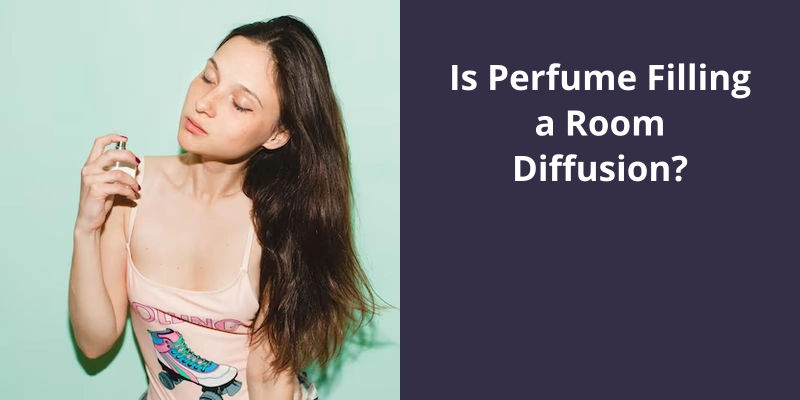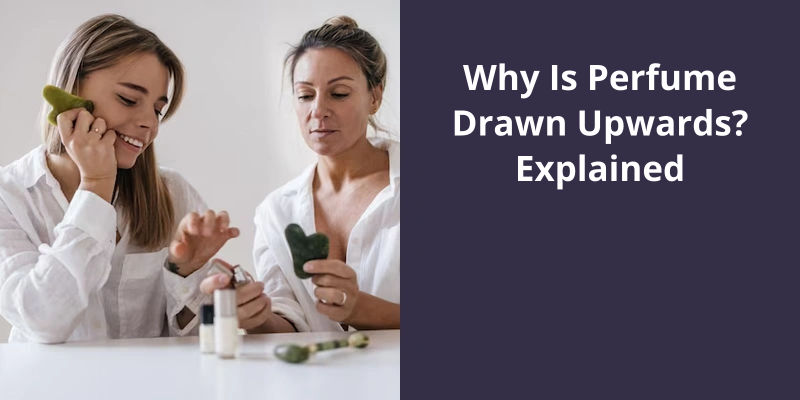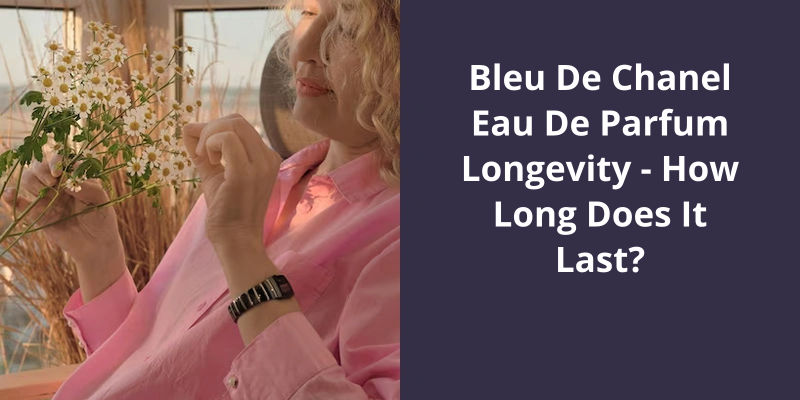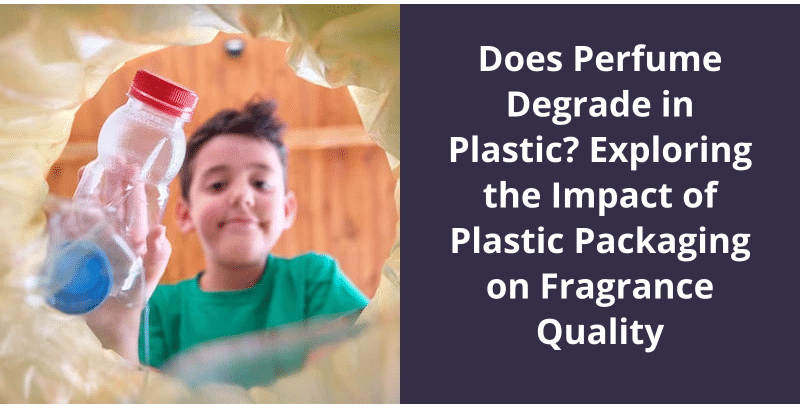Yes, perfume filling a room is an example of diffusion. Diffusion is the process where particles spread out from an area of high concentration to an area of low concentration. When a bottle of perfume is opened, the particles of perfume start to spread out and mix with the air particles. Over time, these perfume particles will spread throughout the room. This process continues until the particles are evenly distributed throughout the room. So, in simpler terms, this means that the smell of the perfume diffuses, or spreads, throughout the room.

Is Smelling Perfume From Across the Room Diffusion?
Have you ever walked into a room and immediately detected the scent of perfume? You may have wondered how far away the source of the scent was located. This phenomenon is known as diffusion. When perfume particles mix with the particles of air, they’re free to move quickly in all directions. The fragrance of perfume spreads throughout the room due to this natural process.
It’s observed in many different fields, including physics, chemistry, and even biology. In fact, understanding diffusion is a fundamental principle in molecular biology, where it explains how molecules move across cell membranes to enter or exit cells.
The Role of Temperature and Humidity in Perfume Diffusion
- Temperature and humidity can greatly impact the diffusion of perfume.
- Higher temperatures tend to increase the volatility of fragrance molecules, leading to a stronger and faster diffusion of scent.
- Humidity also plays a role in perfume diffusion, with higher levels of humidity typically leading to stronger and longer lasting scent.
- In contrast, cooler temperatures and low humidity can decrease perfume diffusion and make the scent less noticeable.
- The ideal temperature and humidity for perfume diffusion may vary depending on the specific fragrance and individual preferences.
Now that we’ve a basic understanding of diffusion in perfume, let’s explore a specific example of how this process plays out in the world of fragrance.
What Is an Example of Diffusion in Perfume?
Perfumes are a blend of various chemical compounds which are added together to create a unique scent. These chemical compounds are volatile in nature, meaning they’ve a tendency to evaporate quickly. When a perfume is sprayed or applied on the skin, the volatile compounds evaporate and mix with the surrounding air molecules. This mixing process is known as diffusion.
The rate of diffusion of perfumes depends on various factors such as the concentration of the perfume, the temperature of the room, humidity and air circulation. If the concentration of the perfume is high, it will diffuse more quickly than a perfume with low concentration.
Perfume diffuses through the principles of Brownian motion. Brownian motion refers to the random movement of particles in a gas or liquid. When a perfume particle is sprayed or applied, it tends to move from an area of high concentration to an area of low concentration. This movement occurs due to the collisions of the perfume particles with air molecules. As the perfume particles collide with the air molecules, they gradually spread out and reach all corners of the room.
If the shape of the bottle is such that it restricts the flow of perfume, the rate of diffusion will be slow. Similarly, if the nozzle is blocked or partially clogged, the perfume won’t diffuse evenly and will result in uneven scent distribution.
The next time you apply perfume, take a moment to appreciate the science behind the scent and the role that diffusion plays in making the fragrance reach your nostrils.
How Are Perfumes Created? (Discuss the Process of Creating a Perfume From Selecting and Combining Fragrances to Testing and Refining the Final Product)
- Select and collect essential oils and fragrances
- Research and develop the desired scent profile based on target audience and market trends
- Combine and mix fragrances to create a preliminary scent
- Let the scent settle and mature for a few days before testing
- Test the scent on a small group of people to get feedback
- Refine scent based on feedback and continue testing
- Once finalized, create a formula and measure out ingredients needed for larger batches
- Mix ingredients in appropriate ratios to get consistent scent in each batch
- Let perfume rest for a few weeks to ensure fragrance is stable and matured
- Bottle and package perfume for distribution and sale
Source: How is perfume an example of diffusion? – Byju’s
Understanding the basic properties of gases is crucial in comprehending the intriguing behaviour of perfume vapours when the bottle is opened. One such property is called diffusion, which governs the gradual spread of molecules from an area of high concentration to an area of low concentration. This concept plays an important role in our perception of smell, as perfume vapours slowly disperse in the air around us, creating an immersive olfactory experience. Let’s dive deeper into the science behind this fascinating phenomenon.
What Property Involved When You Open a Bottle of Perfume?
When you open a bottle of perfume, you’re unleashing a complex mixture of chemicals that form it’s unique scent. These chemicals are generally volatile and will readily evaporate into the air around them. This process is known as diffusion, and it’s responsible for the behaviour of perfume vapours.
The fundamental principle at work here is that gases have a tendency to spread out and occupy the available space. In other words, if you’ve a container filled with a gas, it will naturally try to expand and push into any open areas nearby. This is why a bottle of perfume can fill a room with it’s scent, even though only a small amount was initially released.
As the vapours spread out, they become diluted and mix with the surrounding air. This is why you might notice the scent of a particular perfume lingering in a room even after it’s been closed up for some time.
Another important property involved in the diffusion of perfume is the size and shape of the perfume bottle itself. If the bottle has a narrow opening, it will be more difficult for the scent to escape, and the diffusion process will be slower.
Ultimately, the complex interplay of factors involved in the diffusion of perfume is what allows us to experience the many different scents and fragrances that are available to us. Whether we’re using a perfume to smell good for an important occasion or simply enjoying the aroma of a scented candle, the power of diffusion is always at work, helping to transport those irresistible smells from one place to another.
Now that we know the diffusion constant of perfume, we can explore how it impacts the way in which we experience smells.
What Is the Diffusion Constant of Perfume?
When we think of perfume, we usually assume that it reaches our nose within a few seconds of being applied. However, the reality isn’t as simple as that. In fact, the perfume molecules take their own sweet time to reach our olfactory receptors. This is because the molecules tend to move around randomly in air due to a process called diffusion.
The diffusion constant is a measure of how quickly a molecule diffuses in a medium such as air. For perfume molecules, the diffusion constant in air is relatively slow, at 1.00 times 10 to the minus six meters squared per second.
For example, if the air is humid, perfume molecules tend to stick to water vapor molecules and diffuse slower.
It’s also worth noting that perfume molecules don’t diffuse in a straight line. Instead, they follow a zigzag path due to collisions with other air molecules.
To understand the diffusion of perfume molecules better, scientists use mathematical models that describe the behavior of these molecules in air. These models consider factors such as the size and shape of the perfume molecules, as well as the properties of air itself.
Conclusion
When a fragrance is sprayed into a room, the particles circulate rapidly, creating a pervasive aroma that fills the entire area. Ultimately, while perfume diffusion may seem like a relatively simple concept, it’s a testament to the complexity and wonder of the natural world that surrounds us.





